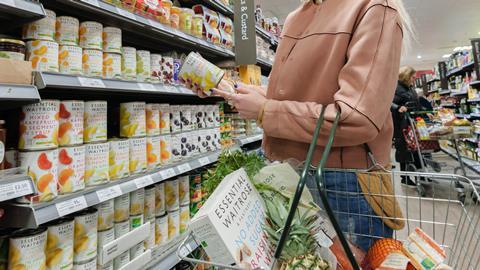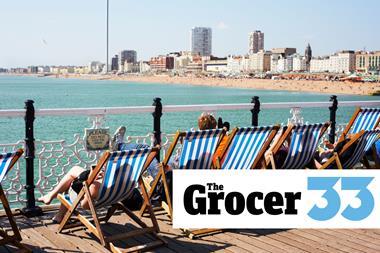As inflation continues to make headlines, Waitrose has become the latest grocer to slash prices. Today, it announced a £100m investment in price cuts. The retailer is lowering the price of 300 own-brand products, the majority of which are from its ‘Essentials’ value range, in the first of three potential tranches of cuts over the rest of the year.
The move brings Waitrose in line with the likes of Tesco, Sainsbury’s, M&S and Morrisons, all of which have announced price events over the past few months in response to the cost of living crisis.
Waitrose executive chairman James Bailey was clear of the need to make its own moves on price. “There’s no point being in the game if you don’t want to be competitive and accessible to as many customers as possible,” he told The Grocer.
But let’s be clear: accessible is very different from price matching. Waitrose is not suddenly going to be rivalling the traditional big four, or the discounters, on price. Knocking 20p off the price of an Essential savoy cabbage is never going to convince Lidl shoppers to switch up, and nor is it meant to.
Instead, these cuts send out a wider message – a veiled appeal to loyal Waitrose customers. It signals the retailer is taking the cost of living crisis seriously, and acknowledges its customers are feeling the pinch.
Bailey is the first to admit Waitrose enjoys a somewhat unique position as a high-end retailer. It has traded on the luxury feel of its stores, the quality of its produce, and its trusted reputation. Customers have, by and large, accepted the need to pay more for those credentials.
This is why Bailey has so far resisted cutting prices in response to rising living costs, instead doubling down on those trusted sourcing and quality credentials. This was captured most presciently in the supermarket’s September relaunch and strapline ‘Food to feel good about’.
At the same time, the retailer has focused on revamping its MyWaitrose loyalty scheme and promoting its value range, through the launch of its ‘Ways to Spend Less’ campaign in November.
Sales appear to have held up against this strategy – at least over the latest quarter. Like-for-like sales were just 0.6% lower in the 12 weeks to 22 January 2023 compared with the same period last year, according to Kantar data. Still, earlier figures pointed to a problem – average basket values fell by 18% in the six months to July 2022 – that needed to be nipped in the bud.
These price cuts are an acknowlegement by Waitrose that its middle-class shoppers are not immune to the effects of rampant inflation, and need to see the retailer making an effort on this front.
In the grand scheme of things, £100m is a stone in a field for a retailer like Waitrose – and one that could make a punch above its weight in terms of shopper perceptions.
Ultimately, though, there is no intention to compromise on Waitrose’s core values. “I’ll repeat what I always say; our priorities are always quality, service and ethics,” Bailey reiterated. This means it will continue important initiatives such as its support for farmers, who received £56m in investment last year.
Waitrose’s key draw remains its sourcing and supplier relationships, rather than price. But this latest investment shows it is willing to take into account the most pressing need for shoppers – and that commitment could go some way to boosting that dwindling basket spend.




















No comments yet